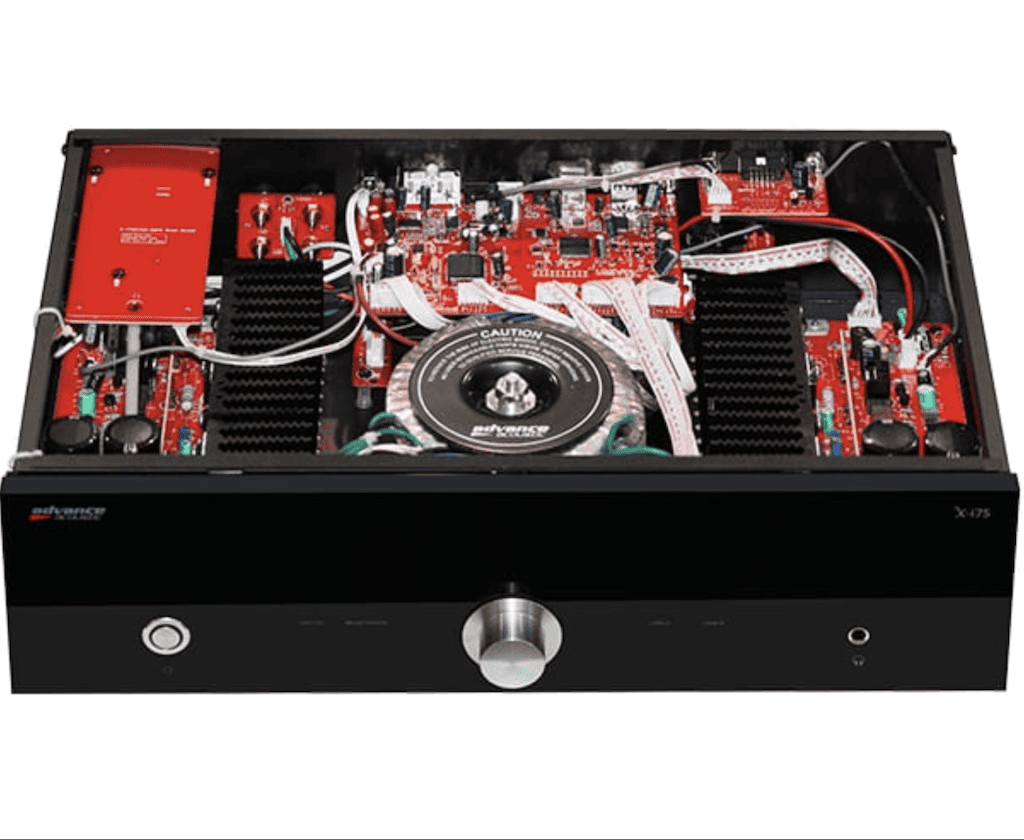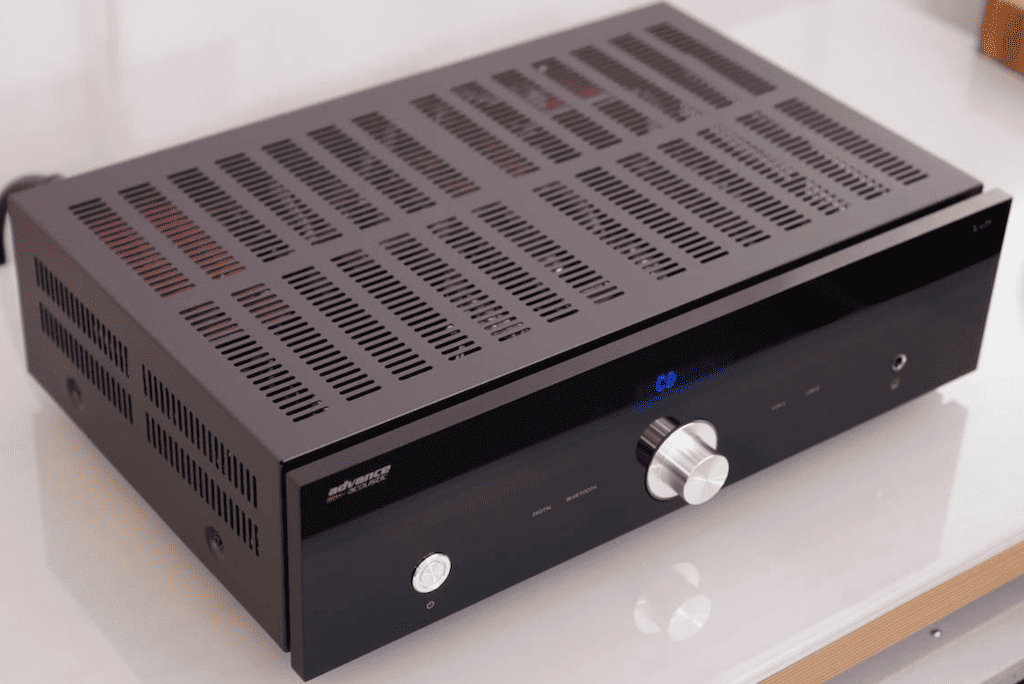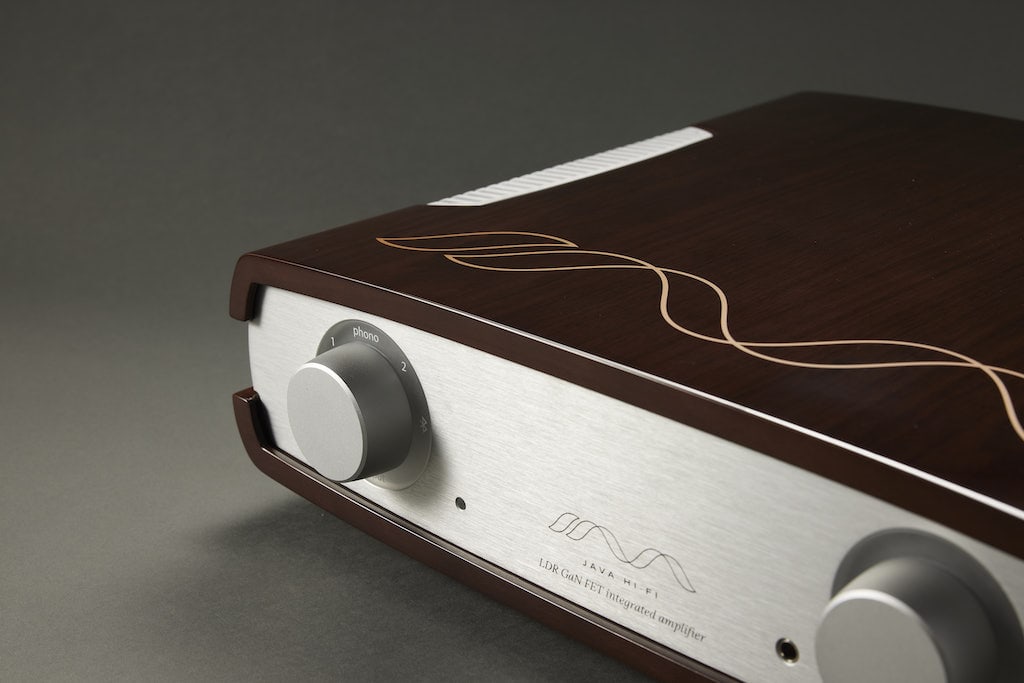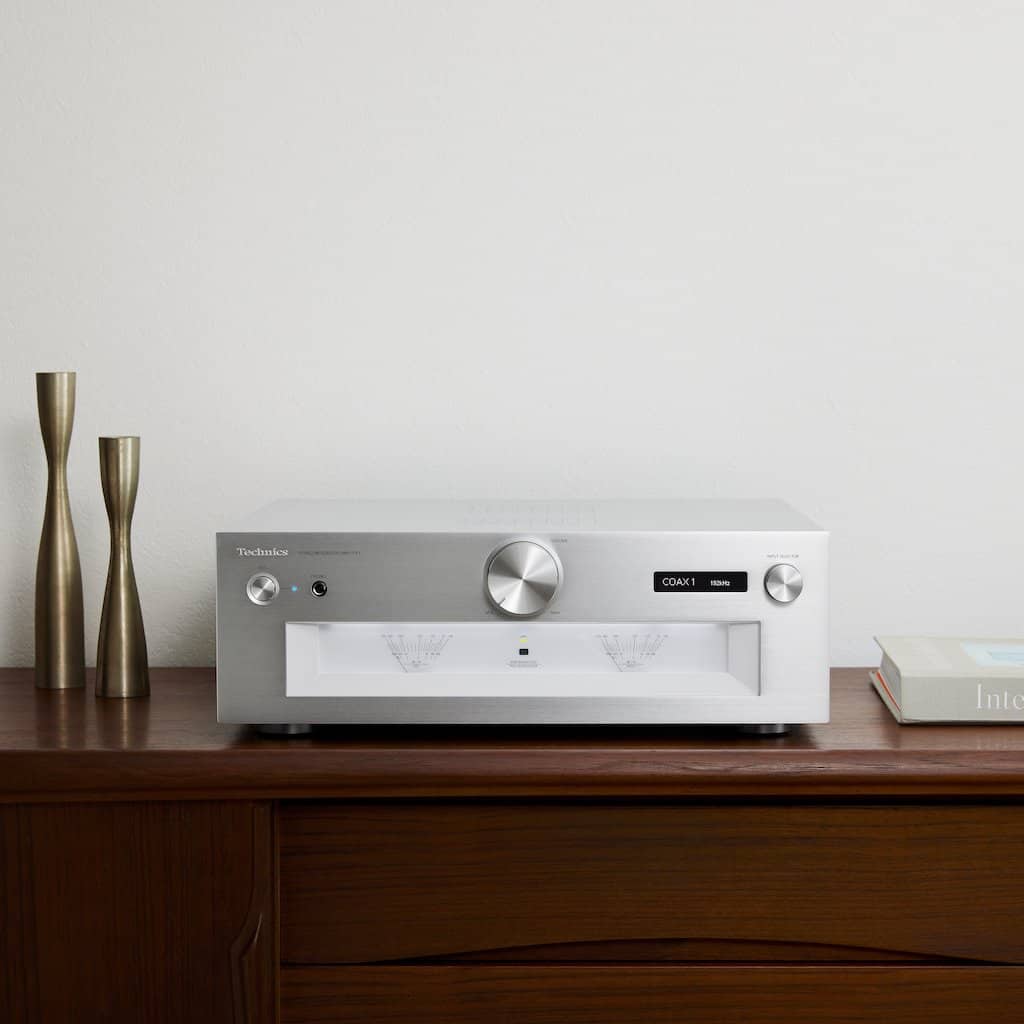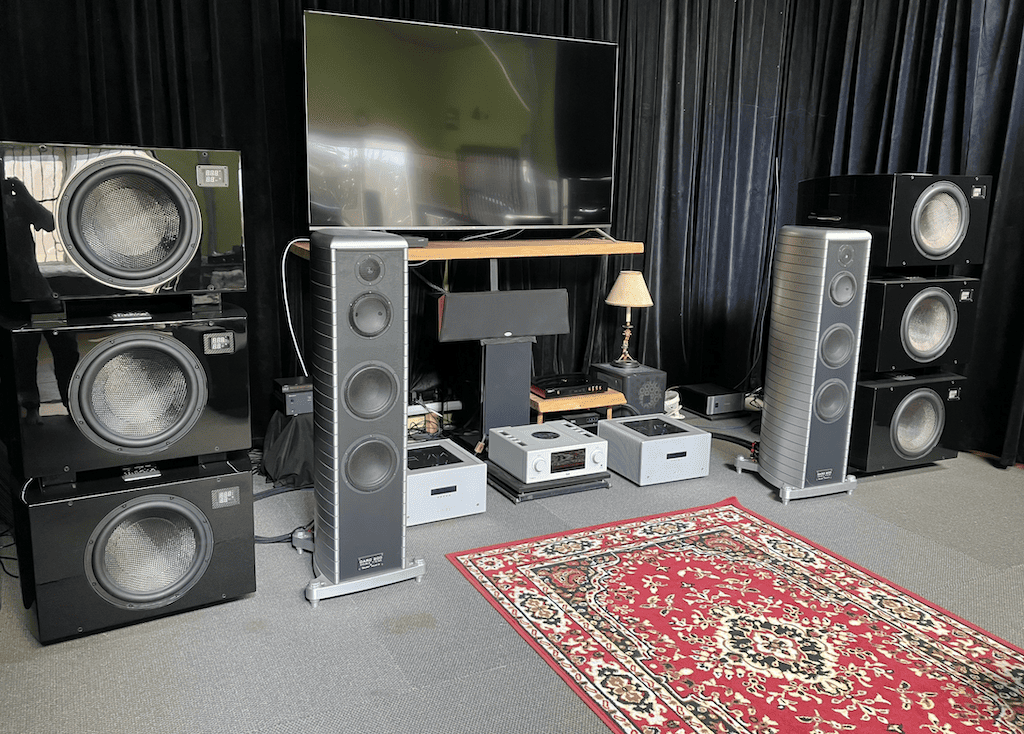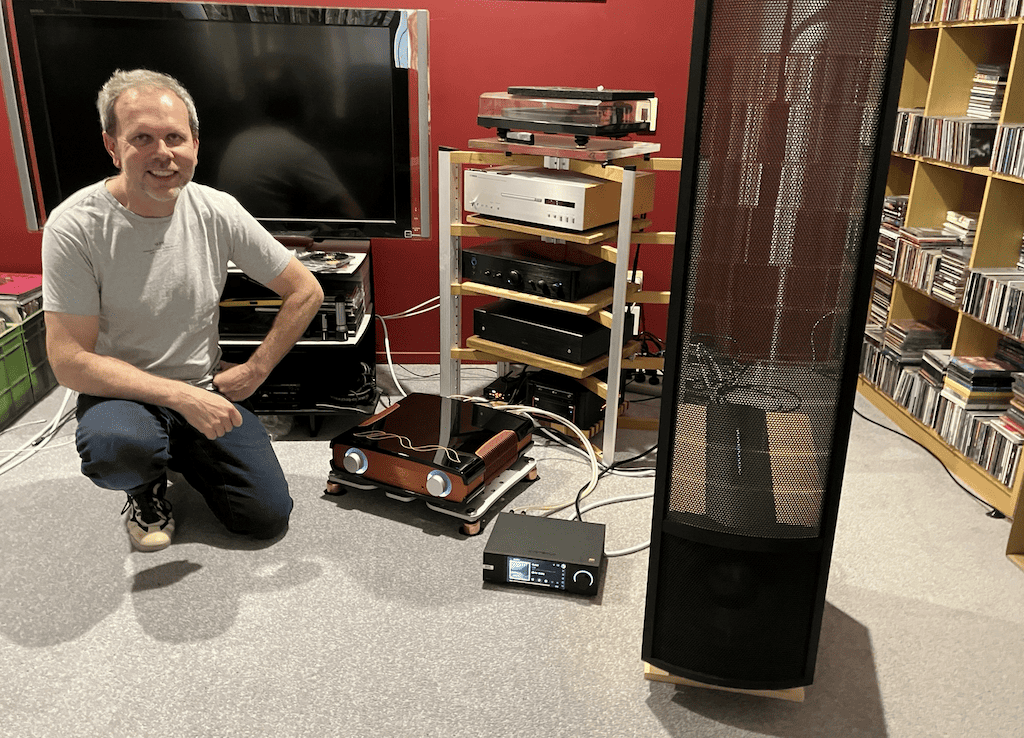Summary
Advance Paris X-i75 integrated amplifier
GARY STEEL spends a sensuous month in the company of a delightfully French amp and falls in love, despite its entry-level designation.
$1599
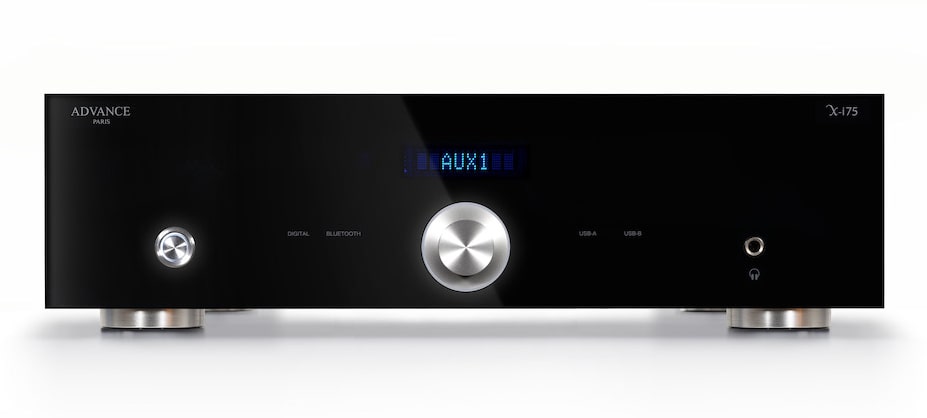
 High-end audio is full of sonic surprises, but a true hi-fidelity experience from a cheap-as-chips $1599 integrated amp? Hardly likely. And yet, that’s exactly my experience with the Advance Paris X-i75, which even – unbelievably – is capable of pure Class A reproduction.
High-end audio is full of sonic surprises, but a true hi-fidelity experience from a cheap-as-chips $1599 integrated amp? Hardly likely. And yet, that’s exactly my experience with the Advance Paris X-i75, which even – unbelievably – is capable of pure Class A reproduction.
But can it be trusted, this virtually unknown brand from France? Well, if you’ve kept your eyes on hi-fi shows lately, you’ll know that there’s a terrific buzz about this young company and its products, and that whenever they offer their gear to a new territory a virtual bidding war erupts from would-be distributors.
Luckily for Aotearoa, Paul Quilter’s good name and long, successful history with quality brands made him the obvious choice as local agent for Advance Paris. Paul visited my home to demo some of the gear and left me with the entry-point X-i75 and the delectable WTX-StreamTubes music streamer (review upcoming). I’ve been listening to this in my system for the best part of a month, and I’ll miss it when it goes.
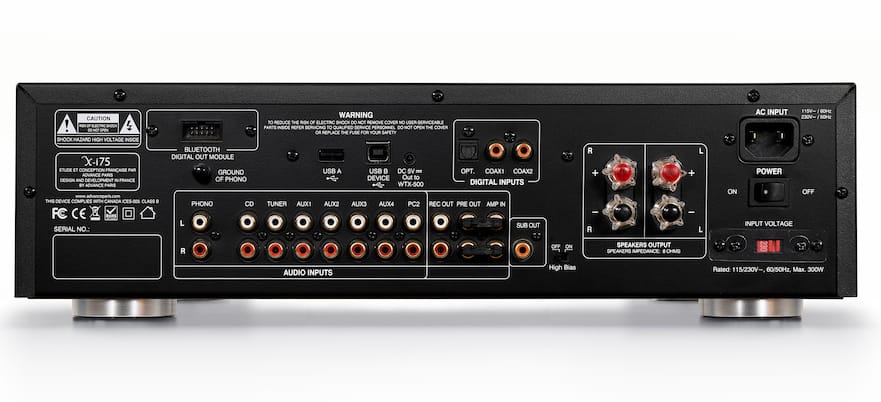 So, why would I even bother auditioning an amp that costs about $20K less than my loudspeakers did when they were new? Wouldn’t there be a horrible disparity, a spectacular component clash? Amazingly, no! I was sceptical at first and suspected that over the long run, I would discover many reasons to dismiss the sonic credentials of the X-i75, but instead, I’ve been constantly surprised by its superb sound and intuitive functionality.
So, why would I even bother auditioning an amp that costs about $20K less than my loudspeakers did when they were new? Wouldn’t there be a horrible disparity, a spectacular component clash? Amazingly, no! I was sceptical at first and suspected that over the long run, I would discover many reasons to dismiss the sonic credentials of the X-i75, but instead, I’ve been constantly surprised by its superb sound and intuitive functionality.
I’m sure that many hardcore audiophiles will greet the following statement with derision, but in so many ways, in my experience, the X-i75 performs as well or better than many amps I’ve tested at six or seven times the price. How did they do it?
Would you like to support our mission to bring intelligence, insight and great writing to entertainment journalism? Help to pay for the coffee that keeps our brains working and fingers typing just for you. Witchdoctor, entertainment for grownups. Riveting writing on music, tech, hi-fi, music, film, TV and other cool stuff. Your one-off (or monthly) $5 or $10 donation will support Witchdoctor.co.nz. and help us keep producing quality content. It’s really easy to donate, just click the ‘Become a supporter’ button below.
First, a little bit about Advance Paris. Paul explained that the company originally started out as Advance Acoustic in 1995, with an emphasis on loudspeakers, but not so long ago was was given a cash injection and sought out a team of clever young audio engineers to create genuinely innovative gear. Like UK company Cambridge Audio, Advance Paris set out to create a range of products at different price points so that they covered all angles and needs, all of which feature ingenious ways of incorporating new technology into classic topology. This is beautifully illustrated by their use of tubes in the preamp stage of some of their products, while making sure that – unlike so many audiophile products – they’re easy and practical to use.
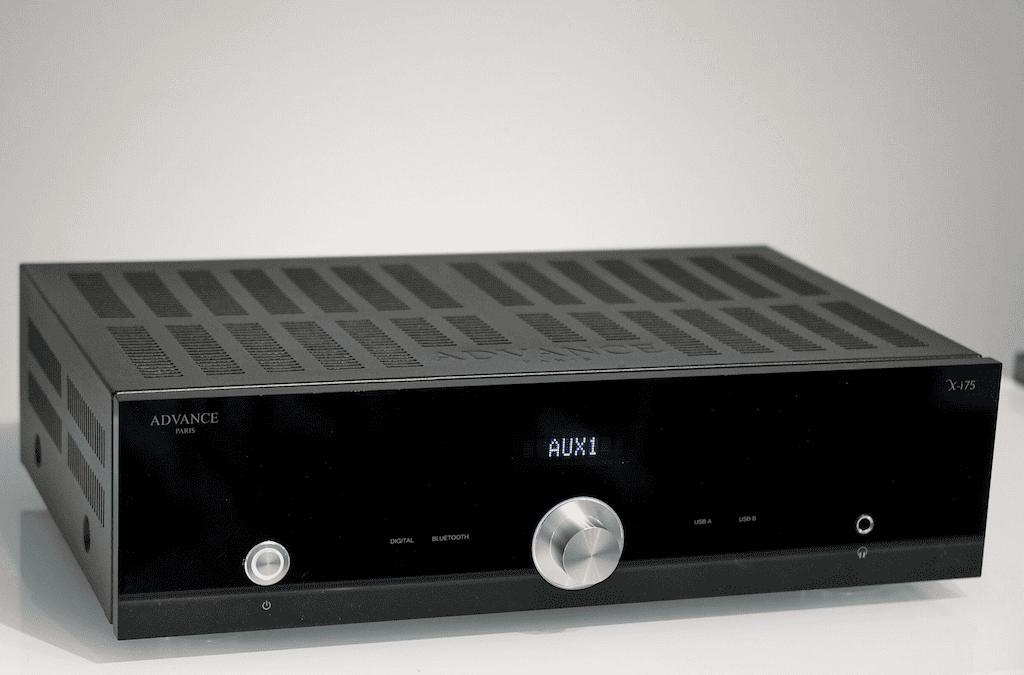 Smart thinking permeates the Advance Paris product line, and despite its rather ordinary looks, they clearly haven’t skimped where it matters with the X-i75. An example of this and perhaps its stand-out feature is its ability to operate in pure Class A, something that’s almost unheard of at this price point. If you want Class A (and why wouldn’t you?) you just switch to High Bias mode on the back of the unit. It automatically shifts into AB mode when you pump up the volume, which made me curious about how loud it would go before the sound quality was reduced. I also wondered why anyone would opt to have it in Class AB mode, so I sent my questions to Paul, who said that the Class A mode was warmer sounding, something that is a matter of personal preference.
Smart thinking permeates the Advance Paris product line, and despite its rather ordinary looks, they clearly haven’t skimped where it matters with the X-i75. An example of this and perhaps its stand-out feature is its ability to operate in pure Class A, something that’s almost unheard of at this price point. If you want Class A (and why wouldn’t you?) you just switch to High Bias mode on the back of the unit. It automatically shifts into AB mode when you pump up the volume, which made me curious about how loud it would go before the sound quality was reduced. I also wondered why anyone would opt to have it in Class AB mode, so I sent my questions to Paul, who said that the Class A mode was warmer sounding, something that is a matter of personal preference.
As regards pure Class A, “When you are listening at normal levels, depending on the sensitivity of your speakers, this will be around 85–90dB at quite loud SPL levels in your room. Most amps will only be producing between 1 and 2 watts at these volume levels. (A 90dB efficient speaker will produce that volume for 1 watt of input power at 1m from the speakers).
“The Advance Paris amps will produce Class A for approximately the first 5 watts of output and then gradually slide into Class AB as the volume increases (bigger amps do more Class A output before they transition to AB). I have opted to leave the switch in the Class A position because I am using the amps in my office and do not play them that loud, but do love the warmer richer tone when in that mode.”
On the front, there’s a simple LED display that tells you, depending on your chosen menu, at any given point which source component you’re listening to along with the volume level. If I squint, I can just see this from across the room. Younger eyes won’t have a problem! The simple volume knob doubles as a multifunction button for choosing different sources, but of course, it’s easier to use the supplied remote. The other noteworthy front-of-unit feature is a headphone socket. This sounded excellent on my admittedly non-high-end Audio Technica headphones, but I’m a sound-in-room fan and my auditioning of this feature was brief, so my advice for head-fi fans would be to take their ‘phones along to your local Advance Paris stockist for a taste-and-try session.
Speaking of the remote control, I found it easy to use and while it’s light and plasticky, it does the job in a no-fuss way. Importantly, the On/Standby button is on the top left side so easy to remember and find in the dark, and while I mistook the Input button for the volume button a couple of times, generally I found the volume button reacted quickly and smoothly. The remote is clearly designed to work with other Advance Paris components like CD players as well, but that’s not unusual. It does have some unexpected features like tone controls for increasing or decreasing bass and treble, but I’m a “bypass” kind of guy and thankfully, there’s a Bypass/Direct Signal button too.
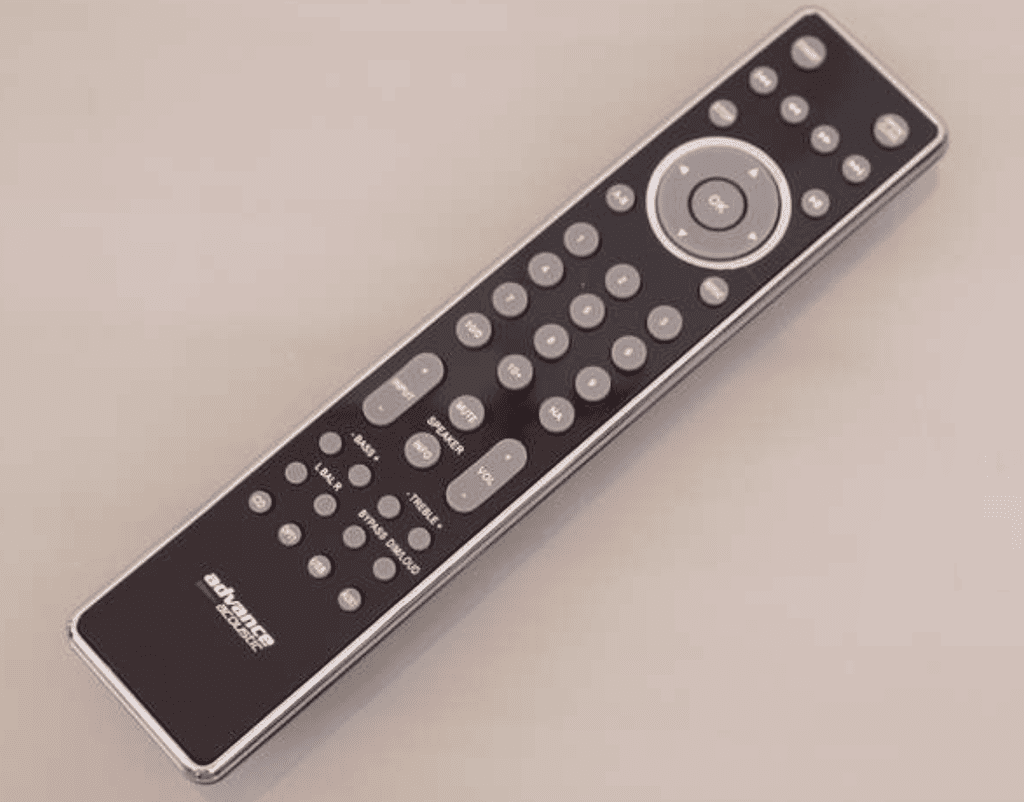 If I went through every input and output on the back of the X-i75 this review would be an epic, so I’ll try and cut to the chase and only mention the most relevant features. As the guff says, there’s “no less than eight stereo audio inputs plus a phono input (MM), three digital audio inputs (one optical and two coaxial) as well as two USB ports. The first, type A, allows you to play the audio files contained on a USB key or on an external hard drive. The second, type B, is intended for the connection of a computer containing digital audio files, the Advance Paris X-i75 amplifier then behaving like an external sound card, capable of processing 24-bit and 192-bit encoded signals.”
If I went through every input and output on the back of the X-i75 this review would be an epic, so I’ll try and cut to the chase and only mention the most relevant features. As the guff says, there’s “no less than eight stereo audio inputs plus a phono input (MM), three digital audio inputs (one optical and two coaxial) as well as two USB ports. The first, type A, allows you to play the audio files contained on a USB key or on an external hard drive. The second, type B, is intended for the connection of a computer containing digital audio files, the Advance Paris X-i75 amplifier then behaving like an external sound card, capable of processing 24-bit and 192-bit encoded signals.”
Which is all very well but my music life revolves around hi-res streaming music, CDs and the occasional vinyl LP, so how did the X-i75 cope with my requirements? I did play a bit of vinyl using my mid-range Pro-ject turntable (Sumiko Moonstone cartridge) and frankly, I found the phono stage to be rather ordinary. I’m assuming that it was added more as a convenience for occasional turntable users and that the amp is geared more towards those who enjoy streaming or listening to files from a computer.
I decided to audition the X-i75 with two different streamer/DACs, firstly the Advance Paris WTX StreamTubes, and secondly the Eversolo DMP-A6, both of which are on the budget end of the pricing spectrum. If I could generalise the synergy of the two different streamers with the amp, it would be that they both worked beautifully with the X-i75: the WTX StreamTubes unsurprisingly making the amp sound very warm and musical, while the DMP-A6 gave it a cleaner, more digital sound with a bit more edge. Ultimately, the choice of streamer will be up to the listener’s personal preferences, but they showed how inherently excellent this bargain-price integrated amp is. I also auditioned using my lovely Yamaha CD-S2000.
One of my favourite electronic artists is Muslimgauze aka Bryn Jones, who up to his tragic death in 1998 sat in his basement studio in Manchester whipping up the most extraordinary collages of sampled sounds from the Middle East featuring his tabla skills and extraordinary and sometimes extreme sound effects. He pumped out literally hundreds of albums in a decade and many of them feature scintillating sonics: rich textures, deep bass, disorienting hallucinatory sound field malarky. ‘Bilechik Mule’ from Hussein Mahmood Jeeb Tehar Gass (1999) is a huge-sounding record with extended deep, dubby bass and rattling ethnic percussion. I expected it to sound somewhat muted through the X-i75, especially when listening via the WTX StreamTubes, but was surprised that I didn’t feel any real lack in the areas that mean most to me: the bass was all there (just not quite as tensile or in-your-face) and similarly, the treble was also still present (just more transparent and less edgy). I should note that I like the nasty, dissonant aspect to some of the Muslimgauze tracks and the WTX StreamTubes tamed this aspect somewhat, but through the DMP-A6 the similarity to CD was uncanny.
Nirvana’s classic 1991 Nevermind album is one of the better-engineered hard rock records and on my own AVM power amp/Rotel preamp combo, ‘Smells Like Teen Spirit’ sounds huge, powerful and dynamic, with plenty of grit and all the instruments separated in the mix. On the X-i75 the picture shrinks somewhat, with less dynamic, at least through the streamers. I quickly made an assumption that the amp wasn’t really capable of handling the intensity of rock. But I was totally wrong! When I played the CD of the same track I got very close to the kind of sonic extremes I’m used to getting with my own gear, with plenty of crunch-value and raw power.
I love XTC’s Black Sea (1980) but Steve Lillywhite’s enormously exciting, brash production leads quickly to sonic fatigue. Listening through the WTX StreamTubes, the big, dynamic drums and pulsing bass of ‘Generals And Majors’ are both still there, but are toned down just enough so that you can listen without wincing. I don’t like using the term “musical” but it’s unavoidable when reviewing the Advance Paris gear. There’s just something right about the presentation, and while it might sound a little less exciting than I’m used to, the plus side is that I’m noticing aspects of the instrumentation that was previously lost in the clamour. Having said that, when I listened to the same track through the Eversolo or CD, much of the brashness returned, but without the earache I generally experience through my Class D amp.
Another of my high-rotate hi-fi audition selections is the Swiss electronic group Yello, whose music is as intentionally cheesy (with a big wink) as it is super-hi-res. Lately, however, I’ve been hooked on the duo’s synth wizard, Boris Blank, whose ‘Electrified’ isn’t really that different to the work he undertakes with vocalist Dieter Meier. This track has a load of sonic seasoning, including a sparkling top end and an immutably firm and deep bottom. The Eversolo streamer is a perfect match for this kind of music, and while it still sounds great through the WTX StreamTubes, it’s just a wee bit mellow, and doesn’t feel like it plumbs the bass depths quite as well.
Summary
My overall impression of the X-i75 as an amplifier of sound is one of astonishment. In many ways the wee Advance Paris WTX StreamTubes streamer is a perfect match, and I had a ball for a few weeks just listening via this combo. I found that I would sit down with the intention of listening to only one track and end up listening to a whole album. It had another weird effect on me: I couldn’t help tapping my feet. And that’s something I rarely do. I just sat back and enjoyed the music. And I played a wide range, from acoustic jazz to music laden with large string and horn sections and blues guitar and soul and hell… a bit of everything, really.
Listening to the X-i75 either via CD or the Eversolo streamer, however, provided me with a more analytical presentation, and suited both the hard rock of Nirvana and the hi-res electronica of Muslimgauze and Boris Blank better. What this means is that the amp is a very capable and versatile transport and will respond brilliantly to the signals it receives. It is slightly on the mellow side with an almost tube-like sound, perhaps in ultra-linear rather than triode mode. But it would be wrong to suggest that the amp lacks sizzle or sheer power when needed.
I should mention that I’ve spent the best part of a month pumping this $1599, 75-watt amp through my pair Martin Logan Summits – large hybrid electrostatic speakers – and astonishingly, the X-i75 wasn’t the mismatch I thought they might be. My Summits respond well to more powerful amps, and sound especially good at high volumes. I was too scared to push the X-i75 really hard because of the obvious disparity, but the amp did amazingly well considering.
I don’t quite know how Advance Paris managed to create, manufacture and retail the X-i75 at such a bizarrely low price. It’s certainly way less handsome than its larger siblings, and doesn’t feature the valve stage of the higher-ticketed models or the beaut retro meters. But unlike its remote, this integrated doesn’t look or feel plasticky, and there’s no sense that they’ve skimped on anything important. It feels like a solid solid state amp.
If I was starting on my hi-fi journey and was lucky enough to discover the X-i75, I’d grab it and its companion streamer and a couple of standmount speakers and be in seventh heaven. I kept on thinking, “I could live with this”. And although that might not sound like much, it is a significant admission. The Advance Paris X-i75 might be at the bottom of the brand’s range, but it really does box well and truly above its weight.
+ The Advance Paris X-i75 is available at select dedicated hi-fi retailers throughout New Zealand.

